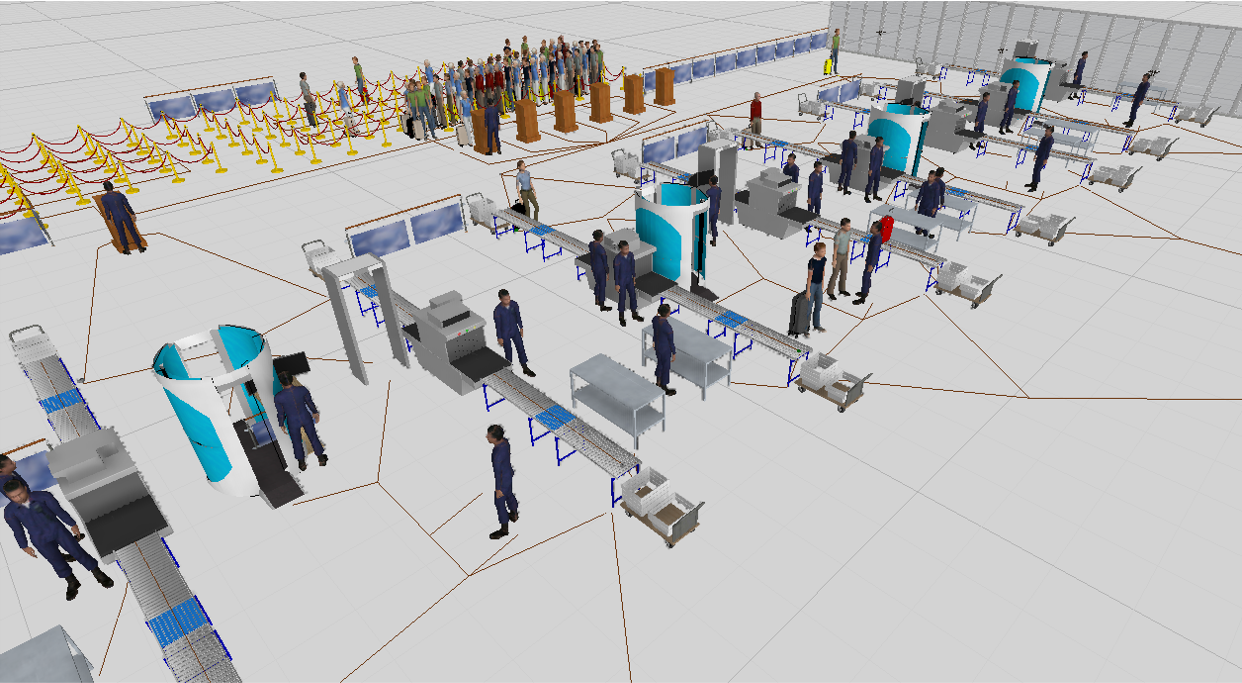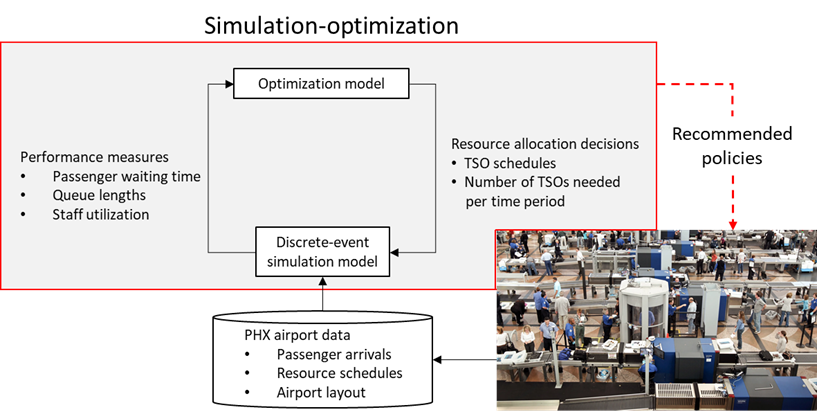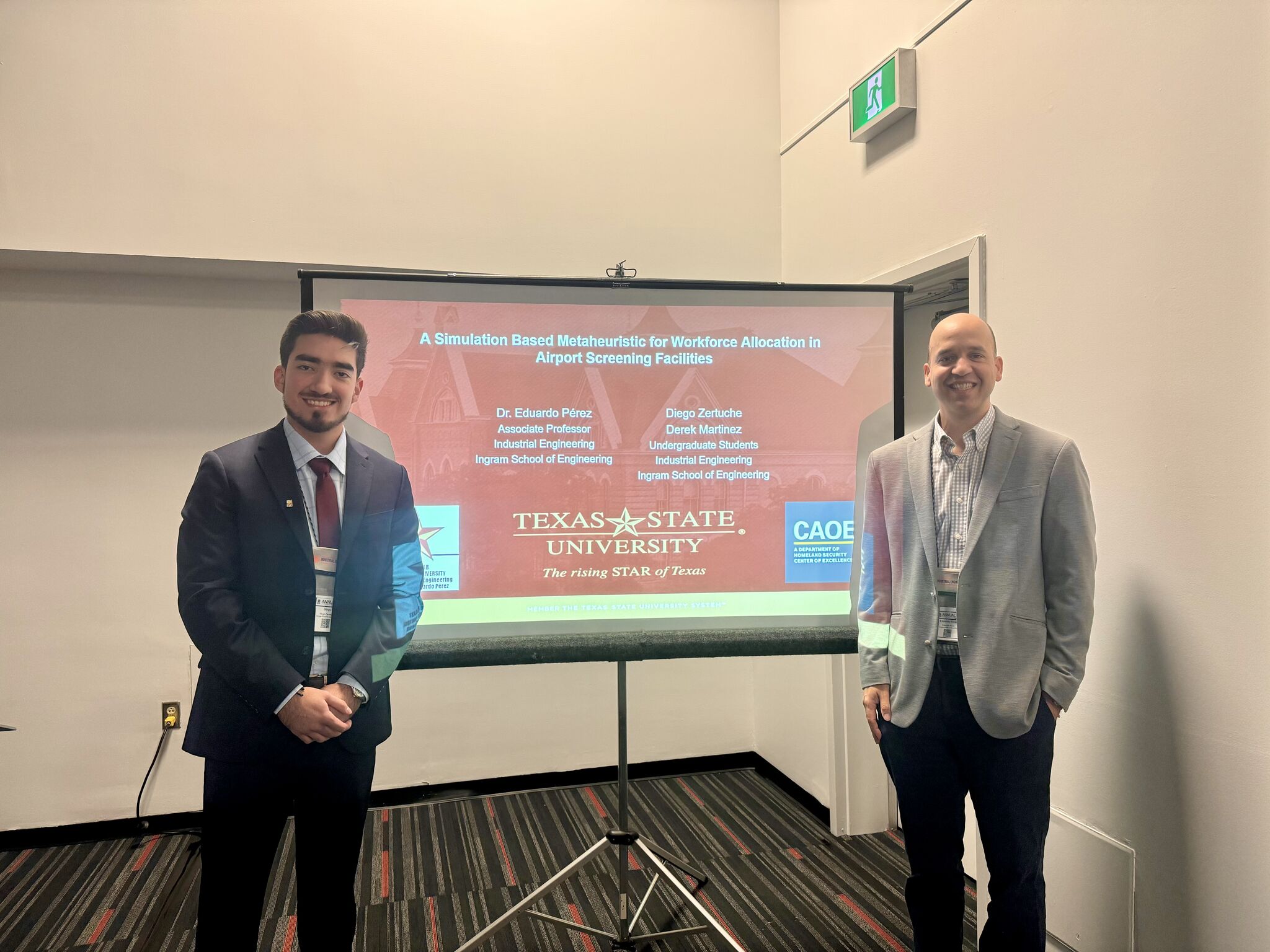HS-Airport Security
A simulation optimization approach to allocate resources in airport checkpoints
Goal: The simulation based optimization strategy aims to improve any airport’s SSCP operations by providing a flexible modeling approach to decide optimal checkpoint configurations and their corresponding workforce allocations.
Funded by: Department of Homeland Security (DHS)
Principal Investigator: Dr. Eduardo Pérez
Collaborators:
- Dr. Francis Méndez Mediavilla (Texas State University)
- Dr. Jorge Sefair (University of Florida)
- Dr. Ross Maciejewski (Arizona State University)
- Dr. Ronald Askin (Arizona State University)
Graduate Students:
- Palaniappan Subramanian
Undergraduate students:
- Logan Taunton
- Diego Zertuche
- Derek Martinez
- Lauren Cravy
Simio Software
Texas State University, Ingram School of Engineering uses Simio simulation software under a grant from Simio LLC (www.simio.com).

General animation of simulation model in SIMIO
Simulation optimization framework
- Simulation based optimization is a suitable technique for problems involving data uncertainties that evolve over time, requiring important system decisions to be made prior to observing the entire data stream.
- This is indeed the case in airport security checkpoints, where the passenger arrival times are difficult to predict and requirements for equipment and human resources must be scheduled in advance

Simulation optimization framework
Research publications
Journal papers:
- Pérez, E., D. Zertuche, D. Martinez, and J. Sefair, “A Simulation based Optimization Workforce Allocation Method to Improve Airport Security Screening Operations”, under second revision.
- Cravy, L. and E. Pérez, “A Synergistic Approach to Workforce Optimization in Airport Screening using Machine Learning and Discrete-Event Simulation” submitted.
Conference proceedings:
- Cravy, L. and E. Pérez, (2025) “Combining Machine Learning and Discrete-Event Simulation for Optimized Workforce Planning in Airport Screening Facilities”, Proceedings of the IISE Conference 2025, Atlanta, May 31 to June 3.
- Zertuche, D., D. Martinez, and E. Pérez, (2024) “A Simulation Based Metaheuristic for Workforce Allocation in Airport Screening Facilities”, Proceedings of the IISE Conference 2024, Montreal, May 18-21.
- Zertuche, D., D. Martinez, and E. Pérez, (2023) “A Simulation Based Strategy for Dynamic Workforce Allocation and Checkpoint Configuration in Airport Screening Facilities”, Proceedings of the IISE Conference 2023, New Orleans LA, May 20-23.
- Pérez, E., L. Taunton, and J.A. Sefair, (2021) “A Simulation-Optimization Approach to Improve the Allocation of Airport Security Screening Resources in Airport Terminal Checkpoints”, Proceedings of the 2021 Winter Simulation Conference, Dec.13-17, pp.1-11. DOI: 10.1109/wsc52266.2021.9715421.
